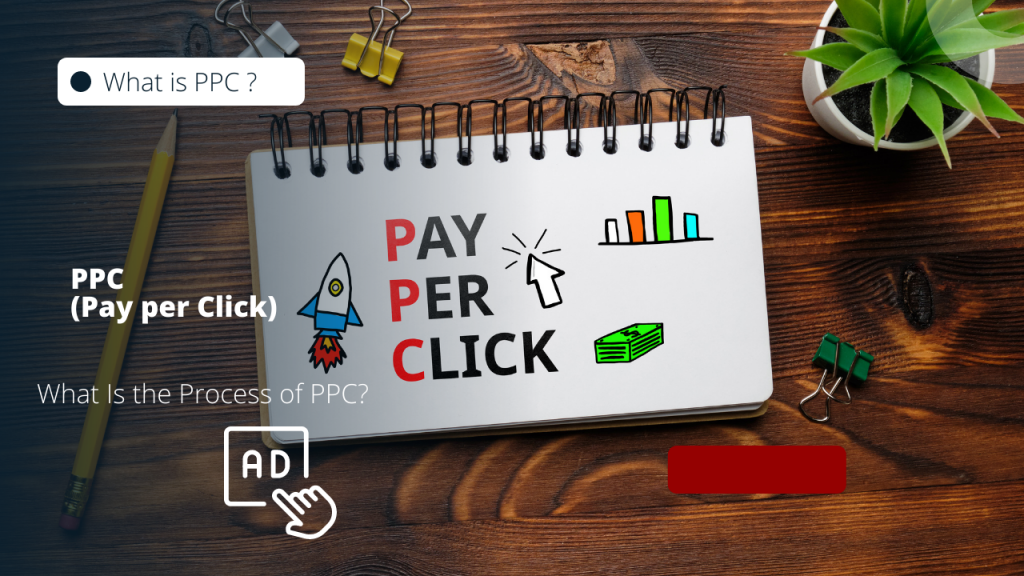
What is PPC?
PPC, or pay-per-click, is a popular advertising model used in online campaigns to drive traffic to a website. Because the advertiser only pays the publisher when their ad is clicked on, it is very efficient. This prevents advertisers from investing their budgets in campaigns that cannot be quantified.
What Is the Process of PPC?
PPC, or pay per click, is a digital advertising model in which an advertiser pays a fixed or auction-based fee each time a user clicks on one of their ads and visits their website. A pay-per-click campaign is designed to “buy visits” to a specific website. The goal is to elicit a specific type of user action, such as registration or purchasing a product.
Although PPC is a popular payment method for online campaigns, it is not the only one. As a result, it is critical to distinguish it from others, which may include:
- PPM (payment per mile)- In this case, the advertiser pays a fixed amount for every thousand impressions, which means that the advertisement is shown to users a thousand times. Keep in mind that you won’t know how much you’ll pay for each visit with this model because it’s difficult to predict how many clicks each additional thousand impressions will generate.
- PPA (payment for acquisition)- In this case, the advertiser is paid each time a user takes a specific action, such as downloading an app. As a result, the link between cost and objectives is even clearer than in the case of PPC.
PPC Key Concepts to Understand
CPC (Cost Per Click.)
The cost per click (CPC) is the amount paid by the advertiser for each ad click. You can either agree on a fixed price for each click or let an auction determine the price. In the latter case, the advertiser sets a bid or maximum price that they are willing to pay for each click. The system compares the ad to similar ones based on their quality and the price they are willing to pay and displays the winning ad first.
CPC = cost ÷ clicks
CTR (click-through-rate)
The CTR is the percentage of users who click on an ad out of all users who see it. In general, the higher the CTR of an advertisement, the better.
The CTR is a determining metric for setting the price of an advertisement in some PPC systems because the system rewards ads with higher quality and thus a higher CTR.
CPC = clicks ÷ impressions
Impressions
The term “impression” refers to all of the views that an advertisement receives, regardless of whether or not the user clicks on it.
Segmentation
You have a lot of control over the audience you want to reach with your ads when you advertise online. You can narrow down the audience that sees our PPC campaigns based on factors such as age, gender, location, interests, and so on. Each pay-per-click platform provides a variety of options that can be combined to achieve a high level of accuracy. This way, you can be certain that you are only paying for clicks from users who are likely to become customers.
The Landing Page
The landing page is the page to which the user is directed after clicking on your advertisement. After only a few seconds, the user has the option of converting or exiting. This means that it is critical that the site be well optimized.
Conversion
Conversion is probably the most important metric in a PPC campaign because it measures the economic performance of your ad. Each purchase made by a user after clicking on an ad is referred to as a “conversion.” The conversion ratio is the percentage of users who became customers as a result of clicking on the ad. A good landing page has three main characteristics: clarity, simplicity, and relevance to the advertisement.
Conversion ratio = number of conversions ÷ web visits
Frequency
In this context, frequency refers to the number of times an ad is shown to a specific user over a given time period. Divide the number of impressions by the number of unique users to calculate frequency.
Frequency = number of impressions ÷ number of unique users
Users are more likely to see an ad several times because this ensures that the ad has an impact on them. However, frequency does not imply that you should bombard your potential customers with advertisements because excessive targeting can result in rejection.
Author- Hiruni Kalinga

I know this if off topic but I’m looking into starting my own weblog and was wondering what all is required to get setup? I’m assuming having a blog like yours would cost a pretty penny? I’m not very web savvy so I’m not 100 sure. Any suggestions or advice would be greatly appreciated. Thank you